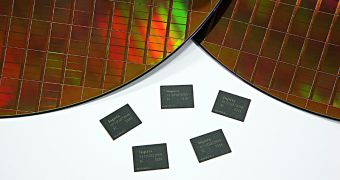It would seem that, even with the cases of oversupply as far as DRAM and NAND chips go, the market for semiconductors has had a very impressive year, financially speaking at least.
As always, market watchers and analysts are keeping an eye on the financial developments of each company in particular.
Thus it was that iSuppli found that Intel and Advanced Micro Devices reached a sort of stalemate in terms of CPU sales.
Still, with the year almost at an end, analysts are, naturally, taking a look at entire market segments.
iSuppli studied what happened on the semiconductor market over the course of 2010 and learned the very pleasing fact that revenues would be seeing their greatest increase in history, as far as the dollar count goes at least.
With all the process advancements in both DRAM and NAND, and with the strong sales of CPUs, the revenues for the whole year will grow by 32.5 percent.
Basically, the figure of $229.5 billion of 2009 will be fairly thoroughly trounced by the $304 billion of 2010.
In other words, the semiconductor revenue will have increased by a very solid $74.5 billion by the end of December, which is well beyond the $59.2 billion in 2001, even though that sum did correspond to a higher on-year growth percentage over 2000 (36.7%).
“While many observers expected the semiconductor industry in 2010 to achieve a solid rebound following the deep drop of 2009, the actual growth far outstripped all expectations,” said Dale Ford, senior vice president, market intelligence services for iSuppli.
“The enormous expansion in semiconductor revenue was based on renewed demand for electronic equipment, such as computers, televisions and cell phones. However, semiconductor sales in 2010 are set to rise at more than three times the rate of electronics equipment revenue,” For added.
“This augmented growth is being driven by a range of multiplying factors, including inventory rebuilding, upward price pressure due to a supply/demand imbalance and an increase in the average semiconductor content of major electronic products,” he concluded.

 14 DAY TRIAL //
14 DAY TRIAL //